Valdemar Švábenský
Ranking-Based At-Risk Student Prediction Using Federated Learning and Differential Features
May 14, 2025Abstract:Digital textbooks are widely used in various educational contexts, such as university courses and online lectures. Such textbooks yield learning log data that have been used in numerous educational data mining (EDM) studies for student behavior analysis and performance prediction. However, these studies have faced challenges in integrating confidential data, such as academic records and learning logs, across schools due to privacy concerns. Consequently, analyses are often conducted with data limited to a single school, which makes developing high-performing and generalizable models difficult. This study proposes a method that combines federated learning and differential features to address these issues. Federated learning enables model training without centralizing data, thereby preserving student privacy. Differential features, which utilize relative values instead of absolute values, enhance model performance and generalizability. To evaluate the proposed method, a model for predicting at-risk students was trained using data from 1,136 students across 12 courses conducted over 4 years, and validated on hold-out test data from 5 other courses. Experimental results demonstrated that the proposed method addresses privacy concerns while achieving performance comparable to that of models trained via centralized learning in terms of Top-n precision, nDCG, and PR-AUC. Furthermore, using differential features improved prediction performance across all evaluation datasets compared to non-differential approaches. The trained models were also applicable for early prediction, achieving high performance in detecting at-risk students in earlier stages of the semester within the validation datasets.
LECTOR: Summarizing E-book Reading Content for Personalized Student Support
May 12, 2025Abstract:Educational e-book platforms provide valuable information to teachers and researchers through two main sources: reading activity data and reading content data. While reading activity data is commonly used to analyze learning strategies and predict low-performing students, reading content data is often overlooked in these analyses. To address this gap, this study proposes LECTOR (Lecture slides and Topic Relationships), a model that summarizes information from reading content in a format that can be easily integrated with reading activity data. Our first experiment compared LECTOR to representative Natural Language Processing (NLP) models in extracting key information from 2,255 lecture slides, showing an average improvement of 5% in F1-score. These results were further validated through a human evaluation involving 28 students, which showed an average improvement of 21% in F1-score over a model predominantly used in current educational tools. Our second experiment compared reading preferences extracted by LECTOR with traditional reading activity data in predicting low-performing students using 600,712 logs from 218 students. The results showed a tendency to improve the predictive performance by integrating LECTOR. Finally, we proposed examples showing the potential application of the reading preferences extracted by LECTOR in designing personalized interventions for students.
* Published open-access in the International Journal of Artificial Intelligence in Education (IJAIED), see https://doi.org/10.1007/s40593-025-00478-6
Single-Agent vs. Multi-Agent LLM Strategies for Automated Student Reflection Assessment
Apr 08, 2025Abstract:We explore the use of Large Language Models (LLMs) for automated assessment of open-text student reflections and prediction of academic performance. Traditional methods for evaluating reflections are time-consuming and may not scale effectively in educational settings. In this work, we employ LLMs to transform student reflections into quantitative scores using two assessment strategies (single-agent and multi-agent) and two prompting techniques (zero-shot and few-shot). Our experiments, conducted on a dataset of 5,278 reflections from 377 students over three academic terms, demonstrate that the single-agent with few-shot strategy achieves the highest match rate with human evaluations. Furthermore, models utilizing LLM-assessed reflection scores outperform baselines in both at-risk student identification and grade prediction tasks. These findings suggest that LLMs can effectively automate reflection assessment, reduce educators' workload, and enable timely support for students who may need additional assistance. Our work emphasizes the potential of integrating advanced generative AI technologies into educational practices to enhance student engagement and academic success.
Knowledge Distillation in RNN-Attention Models for Early Prediction of Student Performance
Dec 19, 2024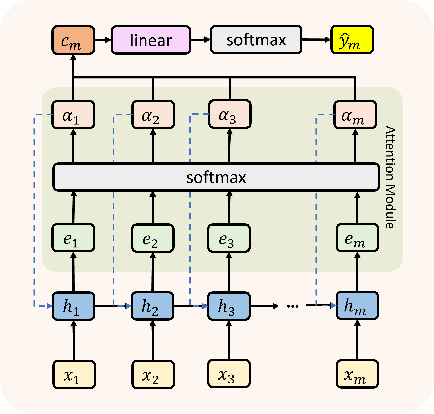


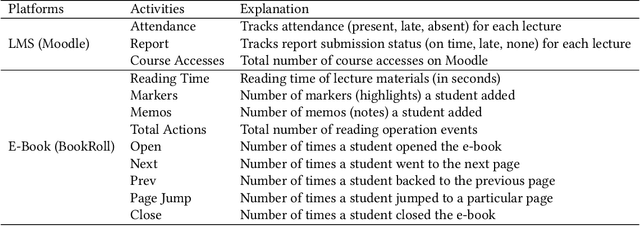
Abstract:Educational data mining (EDM) is a part of applied computing that focuses on automatically analyzing data from learning contexts. Early prediction for identifying at-risk students is a crucial and widely researched topic in EDM research. It enables instructors to support at-risk students to stay on track, preventing student dropout or failure. Previous studies have predicted students' learning performance to identify at-risk students by using machine learning on data collected from e-learning platforms. However, most studies aimed to identify at-risk students utilizing the entire course data after the course finished. This does not correspond to the real-world scenario that at-risk students may drop out before the course ends. To address this problem, we introduce an RNN-Attention-KD (knowledge distillation) framework to predict at-risk students early throughout a course. It leverages the strengths of Recurrent Neural Networks (RNNs) in handling time-sequence data to predict students' performance at each time step and employs an attention mechanism to focus on relevant time steps for improved predictive accuracy. At the same time, KD is applied to compress the time steps to facilitate early prediction. In an empirical evaluation, RNN-Attention-KD outperforms traditional neural network models in terms of recall and F1-measure. For example, it obtained recall and F1-measure of 0.49 and 0.51 for Weeks 1--3 and 0.51 and 0.61 for Weeks 1--6 across all datasets from four years of a university course. Then, an ablation study investigated the contributions of different knowledge transfer methods (distillation objectives). We found that hint loss from the hidden layer of RNN and context vector loss from the attention module on RNN could enhance the model's prediction performance for identifying at-risk students. These results are relevant for EDM researchers employing deep learning models.
Evaluating the Impact of Data Augmentation on Predictive Model Performance
Dec 03, 2024Abstract:In supervised machine learning (SML) research, large training datasets are essential for valid results. However, obtaining primary data in learning analytics (LA) is challenging. Data augmentation can address this by expanding and diversifying data, though its use in LA remains underexplored. This paper systematically compares data augmentation techniques and their impact on prediction performance in a typical LA task: prediction of academic outcomes. Augmentation is demonstrated on four SML models, which we successfully replicated from a previous LAK study based on AUC values. Among 21 augmentation techniques, SMOTE-ENN sampling performed the best, improving the average AUC by 0.01 and approximately halving the training time compared to the baseline models. In addition, we compared 99 combinations of chaining 21 techniques, and found minor, although statistically significant, improvements across models when adding noise to SMOTE-ENN (+0.014). Notably, some augmentation techniques significantly lowered predictive performance or increased performance fluctuation related to random chance. This paper's contribution is twofold. Primarily, our empirical findings show that sampling techniques provide the most statistically reliable performance improvements for LA applications of SML, and are computationally more efficient than deep generation methods with complex hyperparameter settings. Second, the LA community may benefit from validating a recent study through independent replication.
Detecting Unsuccessful Students in Cybersecurity Exercises in Two Different Learning Environments
Aug 16, 2024Abstract:This full paper in the research track evaluates the usage of data logged from cybersecurity exercises in order to predict students who are potentially at risk of performing poorly. Hands-on exercises are essential for learning since they enable students to practice their skills. In cybersecurity, hands-on exercises are often complex and require knowledge of many topics. Therefore, students may miss solutions due to gaps in their knowledge and become frustrated, which impedes their learning. Targeted aid by the instructor helps, but since the instructor's time is limited, efficient ways to detect struggling students are needed. This paper develops automated tools to predict when a student is having difficulty. We formed a dataset with the actions of 313 students from two countries and two learning environments: KYPO CRP and EDURange. These data are used in machine learning algorithms to predict the success of students in exercises deployed in these environments. After extracting features from the data, we trained and cross-validated eight classifiers for predicting the exercise outcome and evaluated their predictive power. The contribution of this paper is comparing two approaches to feature engineering, modeling, and classification performance on data from two learning environments. Using the features from either learning environment, we were able to detect and distinguish between successful and struggling students. A decision tree classifier achieved the highest balanced accuracy and sensitivity with data from both learning environments. The results show that activity data from cybersecurity exercises are suitable for predicting student success. In a potential application, such models can aid instructors in detecting struggling students and providing targeted help. We publish data and code for building these models so that others can adopt or adapt them.
Comparison of Large Language Models for Generating Contextually Relevant Questions
Jul 30, 2024Abstract:This study explores the effectiveness of Large Language Models (LLMs) for Automatic Question Generation in educational settings. Three LLMs are compared in their ability to create questions from university slide text without fine-tuning. Questions were obtained in a two-step pipeline: first, answer phrases were extracted from slides using Llama 2-Chat 13B; then, the three models generated questions for each answer. To analyze whether the questions would be suitable in educational applications for students, a survey was conducted with 46 students who evaluated a total of 246 questions across five metrics: clarity, relevance, difficulty, slide relation, and question-answer alignment. Results indicate that GPT-3.5 and Llama 2-Chat 13B outperform Flan T5 XXL by a small margin, particularly in terms of clarity and question-answer alignment. GPT-3.5 especially excels at tailoring questions to match the input answers. The contribution of this research is the analysis of the capacity of LLMs for Automatic Question Generation in education.
Evaluating Algorithmic Bias in Models for Predicting Academic Performance of Filipino Students
May 16, 2024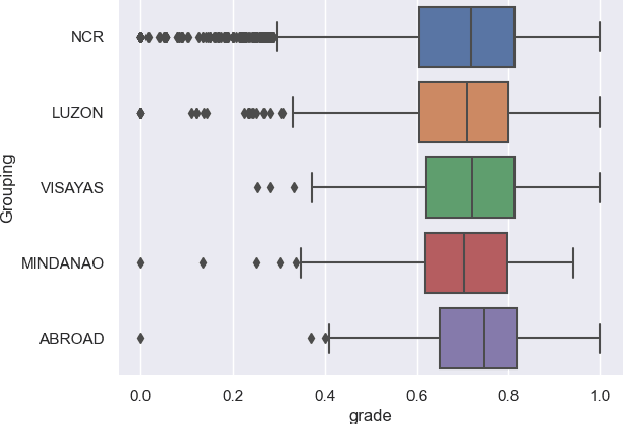
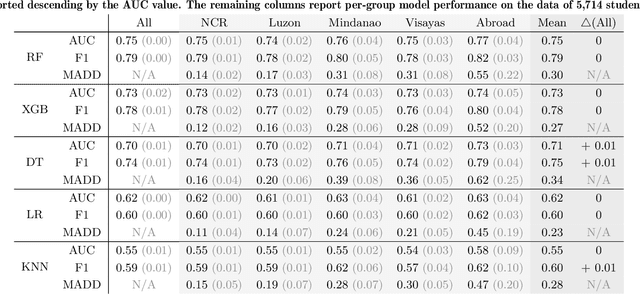
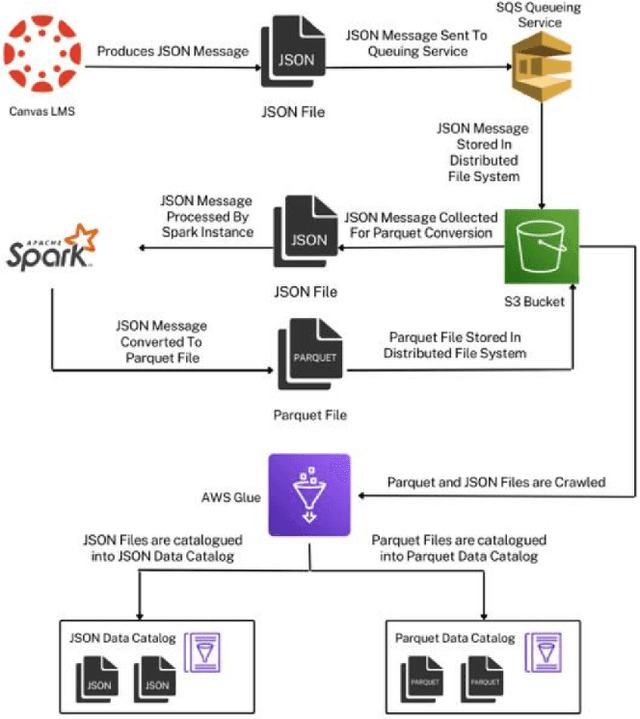
Abstract:Algorithmic bias is a major issue in machine learning models in educational contexts. However, it has not yet been studied thoroughly in Asian learning contexts, and only limited work has considered algorithmic bias based on regional (sub-national) background. As a step towards addressing this gap, this paper examines the population of 5,986 students at a large university in the Philippines, investigating algorithmic bias based on students' regional background. The university used the Canvas learning management system (LMS) in its online courses across a broad range of domains. Over the period of three semesters, we collected 48.7 million log records of the students' activity in Canvas. We used these logs to train binary classification models that predict student grades from the LMS activity. The best-performing model reached AUC of 0.75 and weighted F1-score of 0.79. Subsequently, we examined the data for bias based on students' region. Evaluation using three metrics: AUC, weighted F1-score, and MADD showed consistent results across all demographic groups. Thus, no unfairness was observed against a particular student group in the grade predictions.
Towards Generalizable Detection of Urgency of Discussion Forum Posts
Jul 14, 2023Abstract:Students who take an online course, such as a MOOC, use the course's discussion forum to ask questions or reach out to instructors when encountering an issue. However, reading and responding to students' questions is difficult to scale because of the time needed to consider each message. As a result, critical issues may be left unresolved, and students may lose the motivation to continue in the course. To help address this problem, we build predictive models that automatically determine the urgency of each forum post, so that these posts can be brought to instructors' attention. This paper goes beyond previous work by predicting not just a binary decision cut-off but a post's level of urgency on a 7-point scale. First, we train and cross-validate several models on an original data set of 3,503 posts from MOOCs at University of Pennsylvania. Second, to determine the generalizability of our models, we test their performance on a separate, previously published data set of 29,604 posts from MOOCs at Stanford University. While the previous work on post urgency used only one data set, we evaluated the prediction across different data sets and courses. The best-performing model was a support vector regressor trained on the Universal Sentence Encoder embeddings of the posts, achieving an RMSE of 1.1 on the training set and 1.4 on the test set. Understanding the urgency of forum posts enables instructors to focus their time more effectively and, as a result, better support student learning.
Student Assessment in Cybersecurity Training Automated by Pattern Mining and Clustering
Jul 13, 2023Abstract:Hands-on cybersecurity training allows students and professionals to practice various tools and improve their technical skills. The training occurs in an interactive learning environment that enables completing sophisticated tasks in full-fledged operating systems, networks, and applications. During the training, the learning environment allows collecting data about trainees' interactions with the environment, such as their usage of command-line tools. These data contain patterns indicative of trainees' learning processes, and revealing them allows to assess the trainees and provide feedback to help them learn. However, automated analysis of these data is challenging. The training tasks feature complex problem-solving, and many different solution approaches are possible. Moreover, the trainees generate vast amounts of interaction data. This paper explores a dataset from 18 cybersecurity training sessions using data mining and machine learning techniques. We employed pattern mining and clustering to analyze 8834 commands collected from 113 trainees, revealing their typical behavior, mistakes, solution strategies, and difficult training stages. Pattern mining proved suitable in capturing timing information and tool usage frequency. Clustering underlined that many trainees often face the same issues, which can be addressed by targeted scaffolding. Our results show that data mining methods are suitable for analyzing cybersecurity training data. Educational researchers and practitioners can apply these methods in their contexts to assess trainees, support them, and improve the training design. Artifacts associated with this research are publicly available.
* Published in Springer Education and Information Technologies, see https://link.springer.com/article/10.1007/s10639-022-10954-4
 Add to Chrome
Add to Chrome Add to Firefox
Add to Firefox Add to Edge
Add to Edge